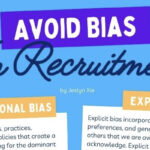Diversity and inclusion have become increasingly important topics in the workplace in recent years. With an emphasis on creating a more equitable and just society, many employers have made efforts to increase diversity in their workforce. However, with the rise of “diversity fatigue,” some employers are finding it challenging to maintain their commitment to diversity and inclusion initiatives.
What is Diversity Fatigue?
First of all, let me be clear – Diversity, Equity and Inclusion (DE&I) is important. Diversity is crucial for creating a vibrant and innovative work environment. When employees come from different backgrounds, they bring with them unique perspectives, experiences, and ideas. This diversity can lead to more creativity, better decision-making, and increased productivity. Additionally, creating a diverse workforce helps to promote a more equitable and just society, which benefits everyone.
However, everything has its limit. “Diversity Fatigue” is a phenomenon where organizations feel overwhelmed or exhausted by efforts to promote diversity and inclusion in their workforce. Diversity initiatives often require significant time, resources, and commitment, which can be challenging to sustain over the long term. As a result, some employers may experience a sense of burnout or frustration, leading to a reduction in their efforts to create a more diverse and inclusive workplace.
I remember when my company first started implementing diversity and inclusion initiatives in our recruitment process. At first, I was excited about the possibilities of bringing in a more diverse workforce. However, as time went on, I began to feel overwhelmed by the sheer amount of work that it took to implement these initiatives.
It was not just about ensuring that we had a diverse pool of candidates to choose from, but we also had to consider how to create an inclusive and welcoming work environment for everyone. This meant reevaluating our job descriptions, recruitment methods, and interview processes to eliminate bias and increase diversity. It was a lot of work, and it felt like it was never-ending.
Eventually, I began to feel a sense of burnout, and I noticed that some of my colleagues were feeling the same way. It’s not that we didn’t believe in the importance of diversity and inclusion in the workplace, but we just didn’t know how to sustain our efforts.
That’s when I realized that we needed to take a step back and reevaluate our approach. We needed to create a more sustainable plan that was integrated into our overall business strategy, starting by setting realistic goals and tracking our progress. We also needed to make sure that everyone at all levels was on board and engaged in the process.
How to Combat Diversity Fatigue in Recruitment?
While diversity fatigue is a real concern for many organizations, there are steps that employers can take to combat it. Here are a few suggestions:
- Create a Sustainable Plan
Develop a long-term plan that integrates diversity and inclusion initiatives into your overall business strategy. This plan should be flexible and adaptable to changes in your organization’s needs and goals.
- Engage Employees at All Levels
Make sure that all employees are involved in the diversity and inclusion initiatives. Encourage open communication and feedback, and ensure that everyone feels included in the process.
- Celebrate Successes
Recognize and celebrate the successes that come from creating a more diverse and inclusive workplace. This will help to keep everyone motivated and engaged in the process.
- Seek External Support
Consider seeking support and guidance from external experts in diversity and inclusion. They can provide valuable insights and best practices to help alleviate some of the burden on internal staff.
Conclusion
Diversity and inclusion are critical for creating a vibrant and innovative work environment. While diversity fatigue is a real concern, it’s essential to remember that creating a diverse and inclusive workforce is an ongoing process that requires ongoing effort and commitment. By creating a sustainable plan, engaging employees at all levels, celebrating successes, and seeking external support, companies can combat diversity fatigue and create a more equitable and just society. By implementing these strategies in recruitment, companies can ensure that they are attracting the best talent from diverse backgrounds, leading to greater success in the long run.




